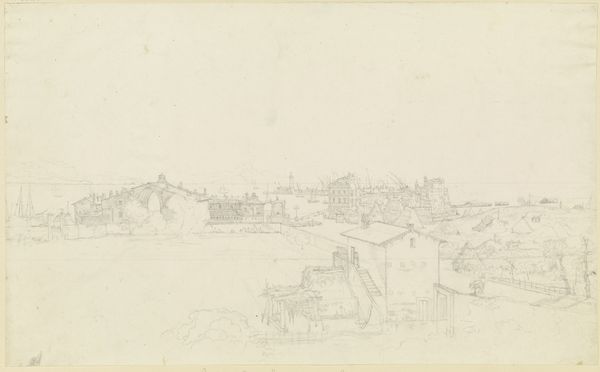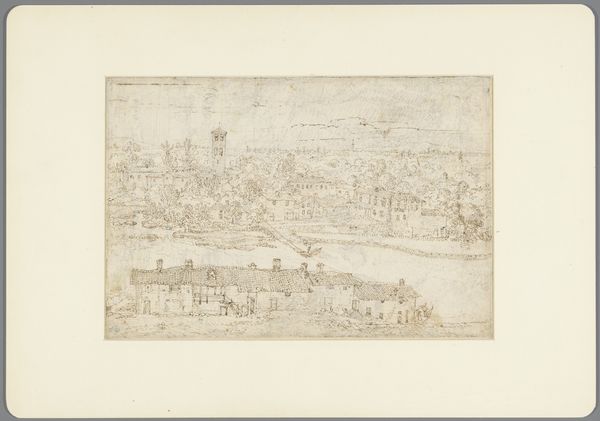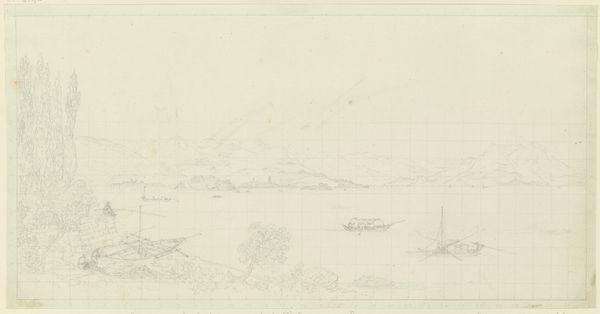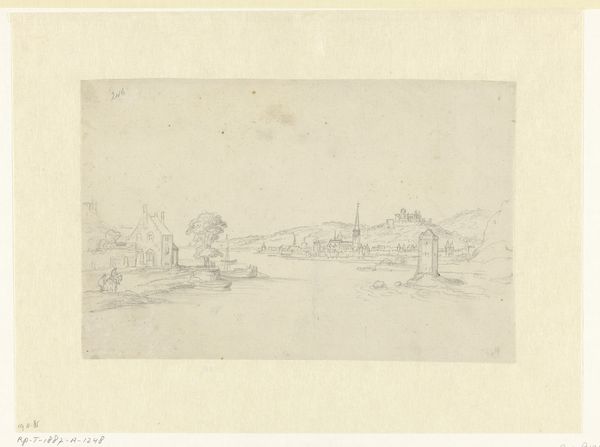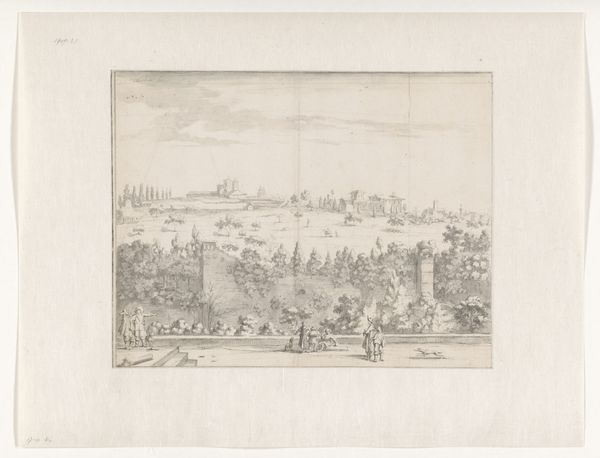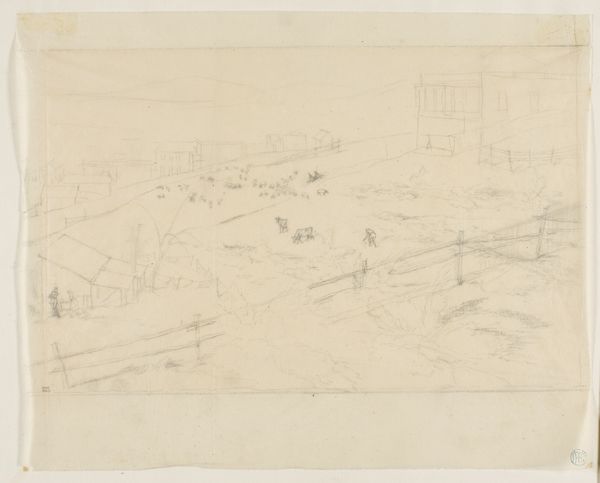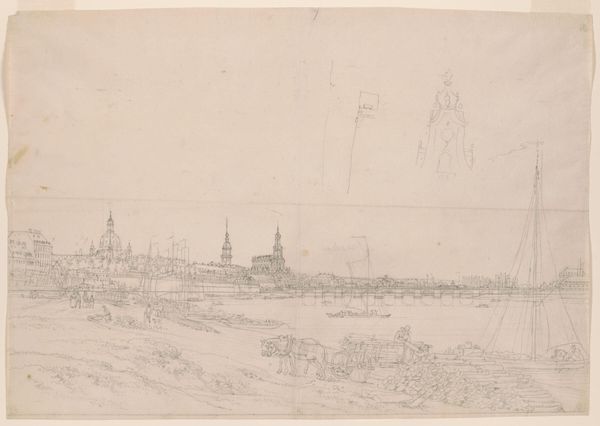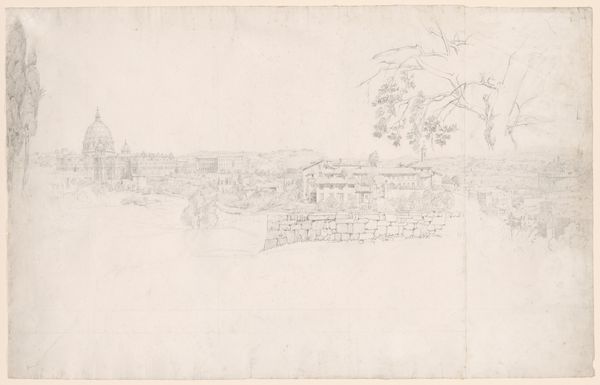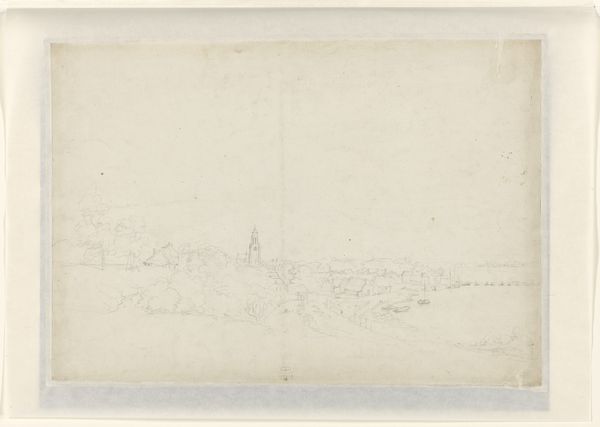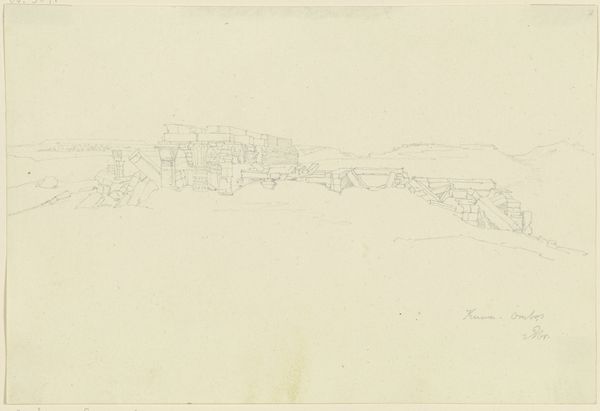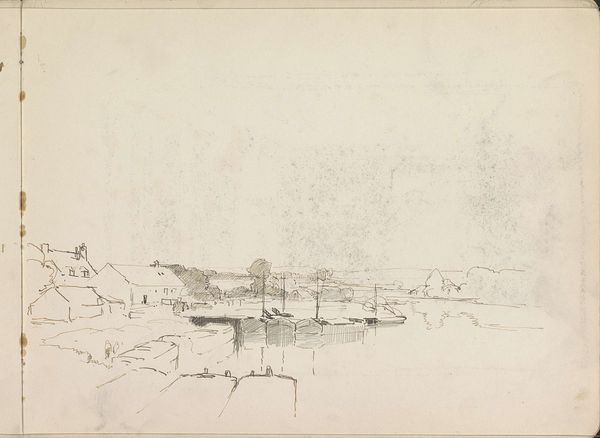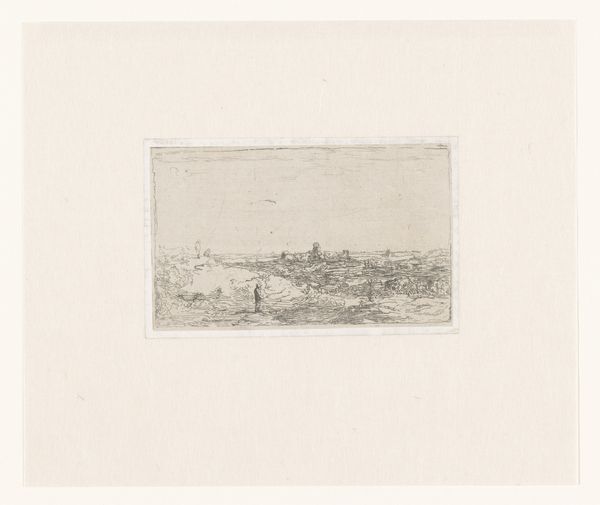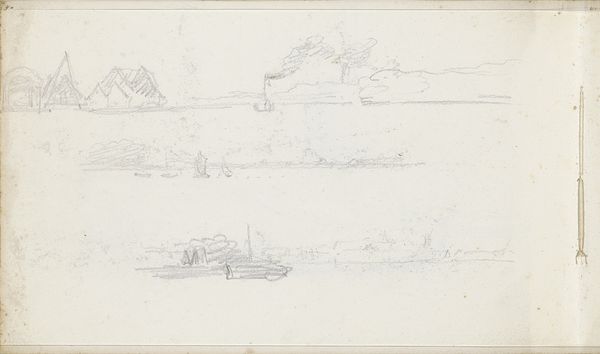
drawing, etching, ink, pencil
#
drawing
#
etching
#
pencil sketch
#
landscape
#
etching
#
ink
#
ink drawing experimentation
#
pencil
#
pen work
#
history-painting
Dimensions: 277 mm (height) x 444 mm (width) (bladmaal)
Curator: Looking at this intricate drawing, "Slaget på Rheden 2. april 1801," executed between 1802 and 1805 by J.F. Clemens, one is immediately struck by its detailed composition rendered in pencil, ink, and etching. It captures a historical moment. Editor: My initial reaction is one of cool detachment. Despite depicting a battle, the monochromatic palette and precise linework give it an almost diagrammatic feel. There’s a sense of remove. Do you agree? Curator: I do, but consider the meticulous execution. The etching captures the event with remarkable clarity, structuring chaos within a visibly deliberate, ordered field. Notice the compositional strategy, for example the dense array of ship forms anchored in the lower portion of the frame and fading with the ascending plane. Editor: Yes, the composition certainly speaks to a hierarchy of forms. What societal pressures might have contributed to an artwork portraying war with such cool precision, especially considering the wider politics and narratives in Denmark at the time? The piece seems less like a celebration of heroism and more an objective document. Curator: Indeed. Clemens crafted this in the years following the actual battle, an event with considerable political ramifications for Denmark. This piece reflects a grappling with those recent traumas, refigured through art’s institutional role in historical storytelling. It functions as more than a straightforward depiction. Editor: The grid behind the scene seems very calculated, a way of maintaining control amidst chaos. How would the etching technique contribute to the final result of this detailed picture? Curator: The use of etching, ink, and pencil drawing brings a sense of precision and historical gravity. Clemens masterfully uses line and tone, achieving detailed textures to render not just the vessels themselves, but also, through contrasts of light and shade, implying volumes, the conditions and atmospheres. The very materiality impacts our interpretation of subject, you know. Editor: An important consideration. By layering both a real battle scene alongside compositional constraints that appear intentionally designed, J.F. Clemens creates a complex and lasting effect. Curator: Indeed. Seeing it afresh allows new ways of interpreting an historical subject with renewed analytical thought. Editor: I agree completely. Analyzing its materiality alongside its representational content offers insightful points.
Comments
No comments
Be the first to comment and join the conversation on the ultimate creative platform.
